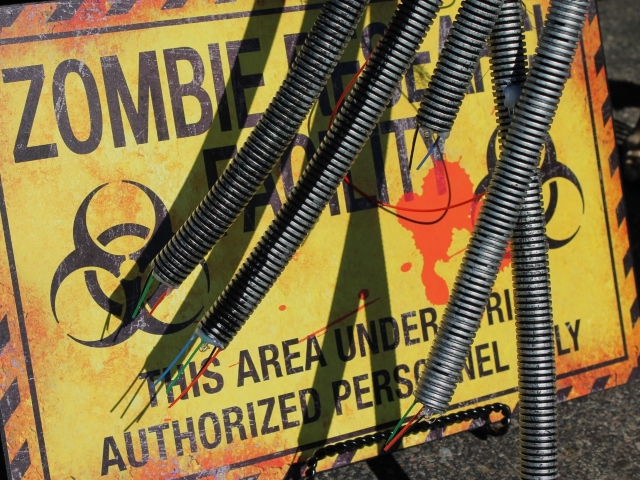
-
True Story: Researchers Investigated Three ‘Zombie’ Cases In Haiti
22 May 2023 by Tayla in Health, RIP, Science, Tech/Sci, World
[imagesource:pxhere]
In Haiti, up to a thousand zombies are reported to local authorities each year, spotted wandering the backwaters of rural towns, freaking out the locals.
According to Haitian Voodoo beliefs, the spirits of the dead can sometimes be captured by sorcerers called bokors, who can then use these souls to reanimate fresh corpses into zombies.
In 1997, researchers decided it would be interesting to investigate three such creatures, each of whom had been recognised by locals as long-deceased individuals returning from the dead.
IFL Science revised the study, titled ‘Clinical findings in three cases of zombification’, published in The Lancet, which explained that “zombification became a subject of popular Western interest during the occupation of Haiti by the USA between 1915 and 1934”.
Apparently, this trio of the walking dead agreed to have their brain activity measured using electroencephalography and DNA testing techniques so that the researchers could try and find a rational explanation for the supernatural-seeming phenomena.
The first participant was a 30-year-old woman who had been spotted three years after her death by family members who recognised her thanks to a distinctive facial mark. The spooky thing is that when the local court authorised the opening of the woman’s grave, it was full of rocks:
Describing the zombie, the study authors explain that “she kept her head in a lowered position, and walked extremely slowly and stiffly, barely moving her arms.” She was also unable to communicate “but would occasionally murmur some incomprehensible but stereotyped words.”
Despite the woman’s apparent zombification, the researchers reveal that her “electroencephalogram and central nervous system examination were unremarkable.” Based on their assessment of her condition, the authors offer a presumptive diagnosis of catatonic schizophrenia, but can’t explain how she came back from the dead.
They do suggest that she might not have died at all, but may instead have been poisoned by a “neuromuscular toxin”. This poison would have likely been administered by the bokor in order to induce catalepsy and trick relatives into thinking she was dead. The bokor would have then retrieved the buried body shortly before the woman regained consciousness, with the lack of oxygen within the grave causing brain damage, thus explaining her zombie-like state.
Then, there was a 26-year-old man who was seen at a local cockfight 19 months after being buried:
The man’s uncle was subsequently found guilty of using sorcery to zombify the man, who was then kept chained to a log at his parents’ house.
Once again, clinical examinations returned no supernatural findings, and the man was diagnosed with “organic brain syndrome and epilepsy.”
However, DNA testing revealed that he was not the man who had died shortly beforehand, which means the zombie theory had to be thrown out.
Similarly, a 31-year-old woman who was identified as a villager who had been dead for 13 years, was examined only to reveal that while she was very much still human, she was not the deceased individual after all.
The study authors had no choice but to conclude that “mistaken identification of a wandering, mentally ill, stranger by bereaved relatives is the most likely explanation”.
So no zombie apocalypse is bound to happen. At least not in the sense that TV shows and movies make it out to be.
[source:iflscience]
Latest News
-
Thai Woman Sentenced To Death For Murdering 14 Friends With Cyanide In Shocking Killing Spree
[imagesource: Sararat Rangsiwuthaporn] A woman in Thailand, dubbed 'Am Cyanide' by Thai...
-
René Magritte Painting Sells For Record R2.1 Billion At Auction
[imagesource:renemagritte.org] A René Magritte painting portraying an eerily lighted s...
-
Brave Rape Survivor Alison Botha Faces New Challenge After Brain Surgery
[imagesource: Alison Botha] Gqeberha rape survivor Alison Botha, a beacon of resilience...
-
Get Ready For The Mother of All Celebrations As MCQP Turns 30
[imagesource:mcqp/facebook] Clutch your pearls for South Africa’s favourite LGBTQIA+ ce...
-
The Iconic Good Hope Centre Is Set For Redevelopment
[imagesource:capetown.gov] The City of Cape Town’s Mayoral Committee has approved the...
-






























